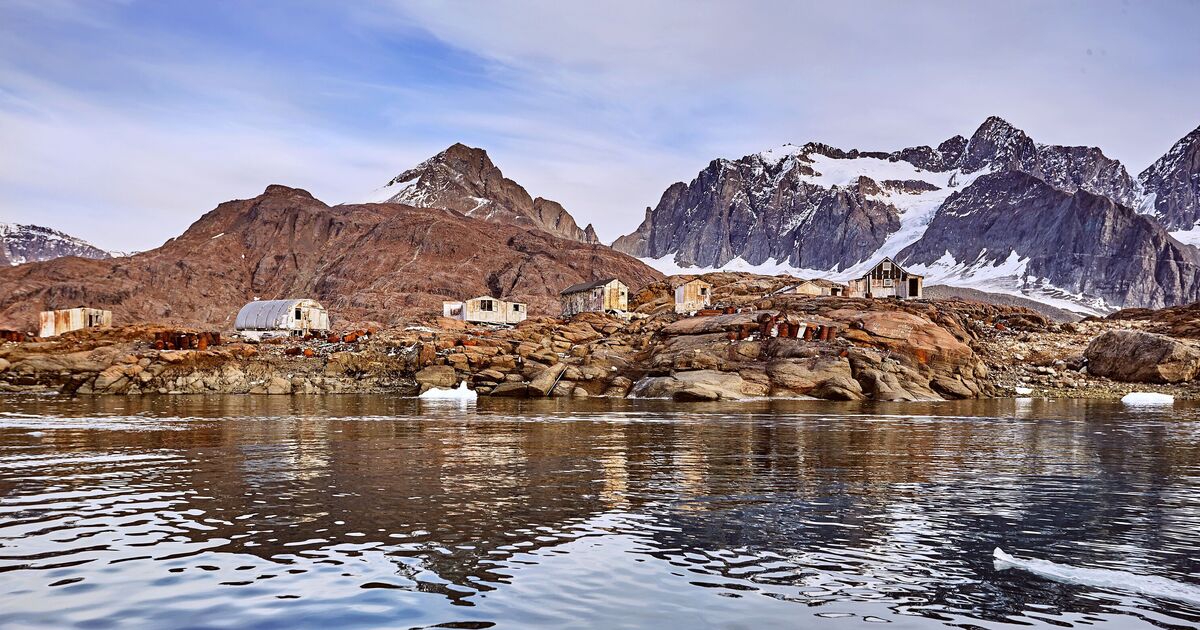Tucked away in the Scoresby Sound area in eastern Greenland lies the abandoned village of Itterajivit – also known by its Danish name, Kap Hope. Once home to more than a hundred residents, the settlement gradually began to empty over the decades until it was officially declared abandoned in 2005.
Today, just a handful of its structures survive, mostly as seasonal cabins for hunters or those brave enough to tackle the Soresby Sound – the world’s largest fjord system. Itterajivit was established in 1925 as one of three satellite settlements around Ittoqqortoormiit – described as one of the most remote settlements on Earth. Despite its isolated and challenging environment, Itterajivit experienced a remarkable rise in population in its first few decades. By the 1930s, the community had built a school‑chapel, speckhouse, workshop, and social infrastructure, including a youth house and recreational facilities. The population peaked at around 112 residents in the 1960s, comparable to or exceeding the main town nearby.
However, Itterajivit began to witness a gradual decline in the 1970s, fueled by isolation, limited economic prospects, and the pull of centralisation policies that favoured consolidation towards larger towns like Ittoqqortoormiit. By 2005, the last nine residents departed, and the settlement was formally declared abandoned.
Today, most of the homes have fallen into decay, though some are maintained by local Inuit hunters who use them as temporary shelters. Most visitors arrive by dog sled or boat. According to BirdForum, one adventurer described the village: “Of the two dozen houses, only a couple are maintained… the rest are in decay… a broken window soon means a house full of snow.
The village lies in a hauntingly beautiful setting, backed by jagged hills and a shoreline that quickly freezes in winter. It is also incredibly close to the Scoresby Sound, which only adds to the dramatic scale of this abandoned Arctic town.
The surrounding area is rich with Arctic wildlife, including polar bears, musk oxen, Arctic foxes, and seals.
Itterajivit has excited television crews for many years. It featured in the Canadian travel series, Departures, in its showcase of remote and lesser-known destinations and most recently in Episode 7 of the BBC’s Expedition of Steve Backshall when he and his team of explorers kayaked the world’s largest fjord.
Travellers can reach the nearby Ittoqqortoormiit by flying into Reykjavik and then to Constable Point (Nerlerit Inaat Airport) via charter flight, then a helicopter or boat to Ittoqqortoormiit. Travel is highly weather-dependent, especially in winter when sea ice limits boat access.
Greenland is so far north that, like much of the rest of the poles, it experiences a Polar Night – when the sun does not rise above the horizon for at least 24 hours during the winter – and a Midnight Sun – during the summer where the sun remains in the sky for 24 hours a day, even at midnight.
Greenland is officially the world’s largest island that is not a continent. Home to 56,000 people, Greenland has its own local government, but is official part of the Kingdom of Denmark.

